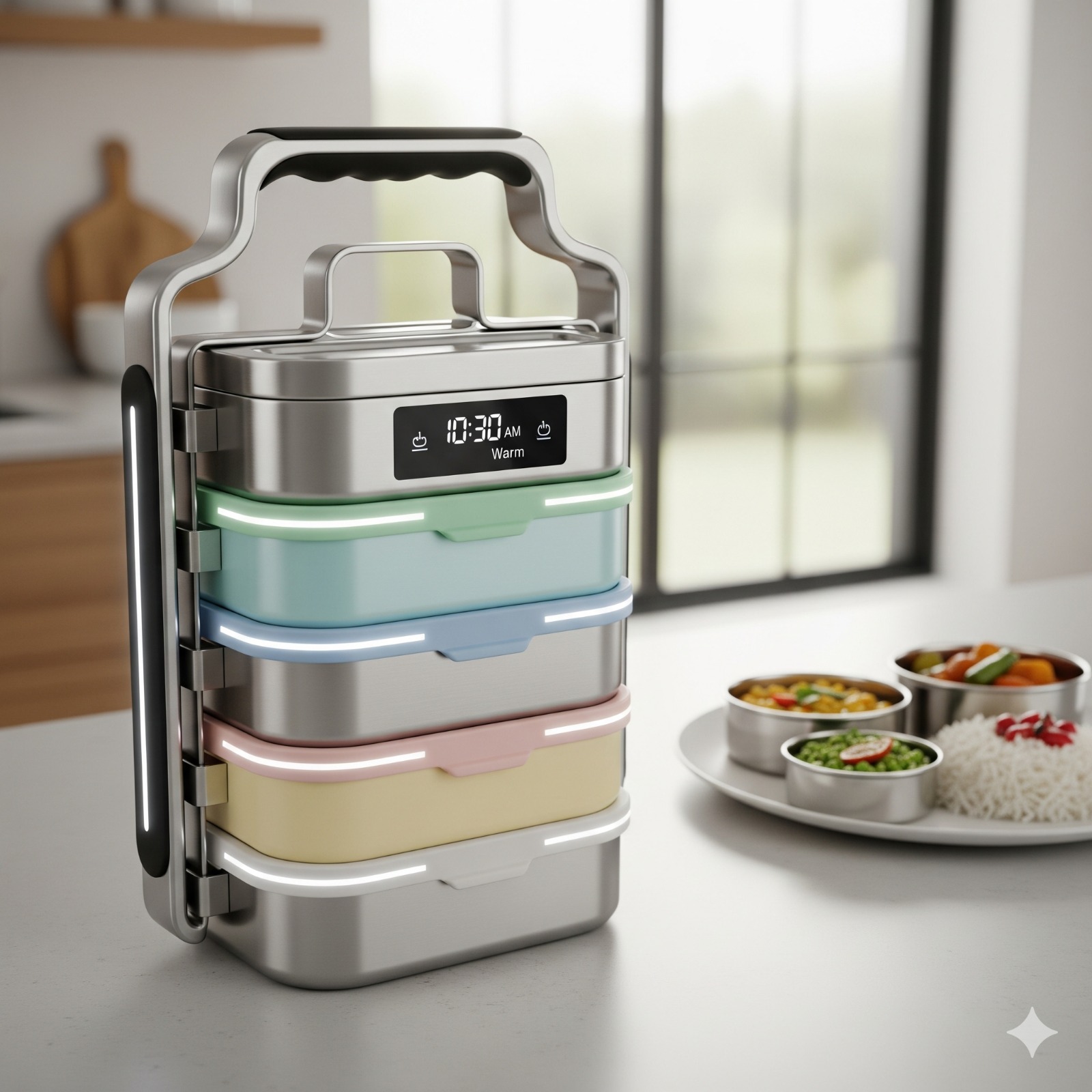Blog Details
- Home
- Blog Details

- Member
- September 2, 2025
FRESH FOOD TIFFIN
An innovative tiffin box that utilizes a canister of compressed CO2 has clear desirability from a consumer standpoint, but its feasibility and profitability present significant challenges that would need to be addressed for commercial success.
***
### Desirability: High Potential
From a desirability perspective, such a product would address a key market need that current lunch boxes fail to meet: **active food preservation beyond simple temperature control**. While vacuum-sealed tiffins exist, a CO2-flushing system offers a superior solution for a range of foods.
* **Extended Freshness**: A CO2-rich atmosphere directly inhibits the growth of bacteria and mold, extending the food's shelf life. This is highly desirable for consumers who pack their lunch in the morning for consumption many hours later.
* **Preservation of Texture and Taste**: Unlike vacuum-sealing which can crush delicate items, a CO2 system would maintain the food's original volume and texture. This is especially appealing for foods like sandwiches, salads, and baked goods.
* **Reducing Food Waste**: By keeping food fresh longer, this product would directly align with growing consumer interest in sustainability and reducing household food waste.
***
### Feasibility: Significant Challenges
The technical feasibility of a CO2 tiffin box faces several hurdles that would require innovative engineering and a robust design.
* **Miniaturization of Components**: The core challenge is creating a safe, small, and reusable canister of compressed CO2 along with a precise release mechanism. Existing solutions for Modified Atmosphere Packaging (MAP) are industrial, not portable. The canister would need to be integrated seamlessly without adding significant bulk.
* **Safety and Regulations**: Compressed gas, even a food-grade one, requires strict safety standards for its container, pressure release valve, and overall design. Navigating safety regulations for a consumer product could be complex, and any failure could be a major liability.
* **Durability and Reusability**: The system would need to be robust enough to withstand daily use, including cleaning, drops, and temperature changes, without compromising the integrity of the gas canister or the sealing mechanism.
* **Operational Simplicity**: The process of "charging" the tiffin with CO2 must be simple and user-friendly. A complex or multi-step process would deter consumers.
***
### Profitability: High-Risk, High-Reward
The profitability of this product is uncertain due to high initial costs and a niche target market. However, a successful launch could lead to high-profit margins due to its premium positioning.
* **High Manufacturing Costs**: The specialized components—the CO2 canister, the high-pressure valve, and the durable, airtight seals—would significantly increase the manufacturing cost compared to a standard insulated tiffin box.
* **Premium Price Point**: This product would be positioned as a luxury or high-end kitchen gadget. This would allow for a higher profit margin, but it also shrinks the potential customer base. It would likely appeal to tech-savvy consumers or those with specific dietary needs, rather than the mass market.
* **Recurring Revenue Model**: The most profitable model could be based on selling small, replaceable CO2 cartridges. This would create a continuous revenue stream beyond the initial purchase of the tiffin box itself, similar to a SodaStream or Nespresso machine.
In conclusion, while a CO2-powered tiffin box is a highly desirable concept, its successful commercialization would depend on overcoming significant engineering, safety, and cost challenges. Its profitability hinges on its ability to command a premium price and establish a recurring revenue model for its consumables.
